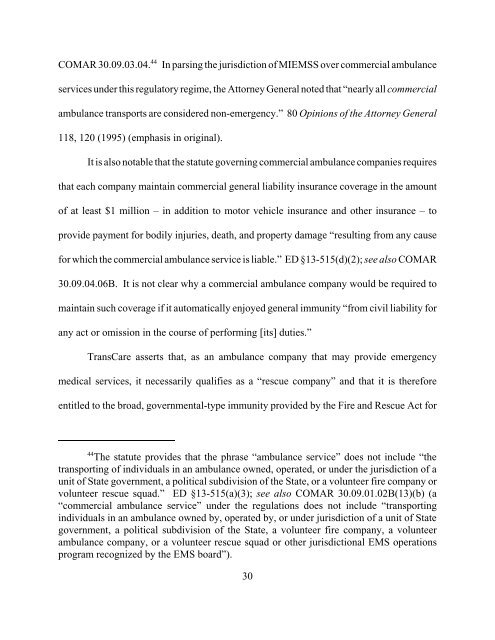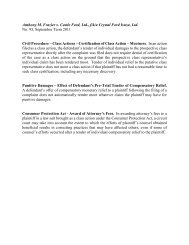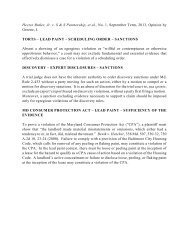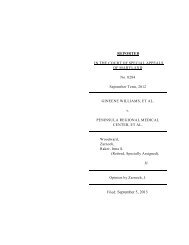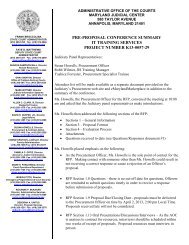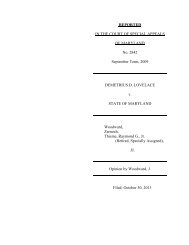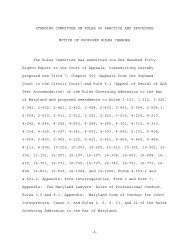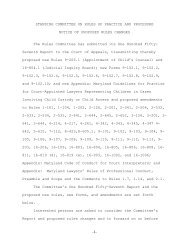24/12 - Maryland Courts
24/12 - Maryland Courts
24/12 - Maryland Courts
You also want an ePaper? Increase the reach of your titles
YUMPU automatically turns print PDFs into web optimized ePapers that Google loves.
COMAR 30.09.03.04. 44<br />
In parsing the jurisdiction of MIEMSS over commercial ambulance<br />
services under this regulatory regime, the Attorney General noted that “nearly all commercial<br />
ambulance transports are considered non-emergency.” 80 Opinions of the Attorney General<br />
118, <strong>12</strong>0 (1995) (emphasis in original).<br />
It is also notable that the statute governing commercial ambulance companies requires<br />
that each company maintain commercial general liability insurance coverage in the amount<br />
of at least $1 million – in addition to motor vehicle insurance and other insurance – to<br />
provide payment for bodily injuries, death, and property damage “resulting from any cause<br />
for which the commercial ambulance service is liable.” ED §13-515(d)(2); see also COMAR<br />
30.09.04.06B. It is not clear why a commercial ambulance company would be required to<br />
maintain such coverage if it automatically enjoyed general immunity “from civil liability for<br />
any act or omission in the course of performing [its] duties.”<br />
TransCare asserts that, as an ambulance company that may provide emergency<br />
medical services, it necessarily qualifies as a “rescue company” and that it is therefore<br />
entitled to the broad, governmental-type immunity provided by the Fire and Rescue Act for<br />
44 The statute provides that the phrase “ambulance service” does not include “the<br />
transporting of individuals in an ambulance owned, operated, or under the jurisdiction of a<br />
unit of State government, a political subdivision of the State, or a volunteer fire company or<br />
volunteer rescue squad.” ED §13-515(a)(3); see also COMAR 30.09.01.02B(13)(b) (a<br />
“commercial ambulance service” under the regulations does not include “transporting<br />
individuals in an ambulance owned by, operated by, or under jurisdiction of a unit of State<br />
government, a political subdivision of the State, a volunteer fire company, a volunteer<br />
ambulance company, or a volunteer rescue squad or other jurisdictional EMS operations<br />
program recognized by the EMS board”).<br />
30


